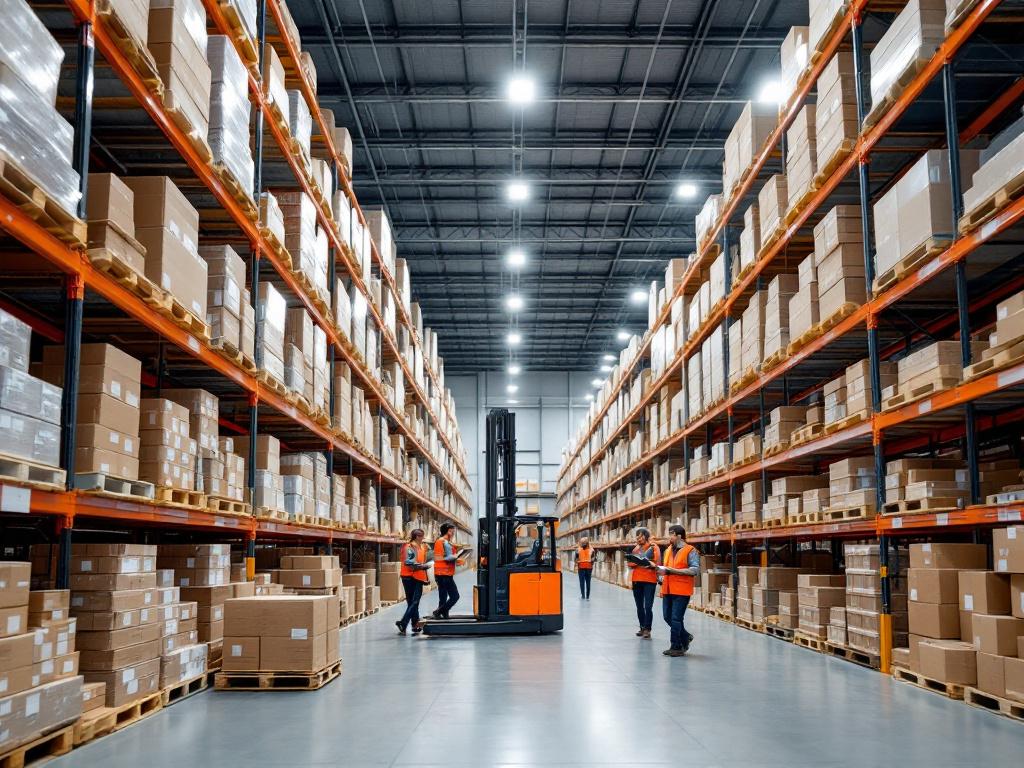In today’s dynamic marketplace, reverse logistics plays a critical role in enhancing customer satisfaction while simultaneously reducing costs. This article delves into the intricacies of reverse logistics, exploring its importance, processes, and best practices that enable businesses to effectively manage product returns and repurpose assets.
Understanding Reverse Logistics
Reverse logistics has become an integral cog in the machinery of modern supply chain management, defined as the process of moving goods from their final destination back to the manufacturer or distributor for the purpose of return, repair, remanufacture, recycling, or disposal. Historically viewed as a cost center, the term has evolved as businesses recognize its potential to enhance operational efficiency, manage resource flow, and minimize waste. The significance of reverse logistics cannot be understated; in an era where sustainability and customer-centricity reign, effectively managing returns and unsold products directly correlates with overall customer satisfaction and brand loyalty. Key processes in successful reverse logistics include the collection of returned goods, assessment of product condition, sorting for resale or disposal, and integrated technology systems to track returns. These elements work cohesively to create a reverse supply chain that aligns with business goals, thereby enhancing both profitability and customer service.
The Role of Returns Management
The significance of returns management within reverse logistics cannot be overstated. Efficient returns management directly influences customer satisfaction and retention. To enhance the returns process, companies should implement best practices for handling returns, beginning with a clear return policy that sets customer expectations. Upon receiving a return, items should be sorted based on their condition—resaleable, repairable, or recyclable.
Investing in a robust tracking system allows for monitoring returned items in real-time, streamlining the sorting and restocking process. Efficiently handling returns means minimizing wait times and accurately updating inventory, ensuring items are quickly available for resale.
Additionally, training staff on effective returns processing enhances efficiency and reduces errors. A transparent process not only fosters trust but also encourages repeat business, as customers feel valued and secure in their purchasing decisions. Ultimately, a holistic approach to returns management can significantly bolster customer loyalty and optimize reverse logistics operations.
Cost Reduction Strategies
To reduce costs related to reverse logistics, businesses can adopt several innovative strategies that not only streamline processes but also enhance profitability.
First, consider **remanufacturing and refurbishing** returned products. By restoring items to like-new condition, companies can resell them at a reduced price, capturing value from products that would otherwise be discarded. This practice decreases inventory waste while also appealing to cost-conscious consumers.
**Utilizing technology** for better inventory management is crucial. Advanced software solutions can track returned items in real-time, optimizing stock levels and minimizing excess inventory. This leads to reduced warehousing costs and improved accuracy in fulfilling customer orders.
Additionally, **optimizing warehouse operations** can yield significant savings. Implementing layout improvements, such as designated areas for returned items, reduces handling time and enhances labor efficiency.
Overall, integrating these strategies can dramatically lower costs and enhance service, supporting a forward-thinking reverse logistics framework that also prioritizes customer experience.
Enhancing Customer Satisfaction
Effective reverse logistics practices significantly enhance customer satisfaction by transforming returns into a seamless experience. When managed well, returns not only meet customer expectations but also foster brand loyalty. For instance, a company like Zappos has built its reputation on a generous return policy that simplifies the returns process. Customers can easily ship back products with prepaid labels, allowing them to shop with confidence and reinforcing their trust in the brand.
Moreover, analyzing return data enables companies to identify trends, addressing common issues proactively. Apple, for example, employs robust data analytics to improve product designs based on return reasons, enhancing overall customer experience and reducing future returns.
By elevating the returns process and prioritizing customer engagement, organizations can cultivate loyalty and increase repeat purchases. In today’s competitive market, showing that customer satisfaction is paramount through effective reverse logistics can lead to a significant differentiator for businesses.
Integrating Technology in Reverse Logistics
Integrating technology into reverse logistics is crucial for enhancing efficiency and accuracy in managing returns. Innovations such as tracking software allow businesses to monitor the status and location of returned products in real-time, improving customer communication and satisfaction. This transparency helps customers feel more secure in their purchase decisions and informs them of key timelines.
Moreover, data analytics plays an essential role in decision-making. By analyzing return patterns, companies can identify frequently returned items, assess potential causes, and develop strategies to mitigate recurring issues. This proactive approach not only reduces costs but also enhances the overall customer experience.
Automation of returns processing further streamlines operations. By employing automated systems, businesses can handle returns more swiftly, reducing the waiting period for customers. Automation can manage returns paperwork and issue refunds promptly, therefore minimizing friction in the customer journey. Together, these technological innovations contribute significantly to optimizing reverse logistics, ultimately supporting enhanced customer satisfaction and lowering operational costs.
Sustainable Practices in Reverse Logistics
Sustainability is rapidly becoming a cornerstone of effective reverse logistics strategies. As environmental consciousness grows among consumers, businesses are compelled to adopt sustainable practices that not only minimize waste but also improve their overall brand reputation. Key approaches include recycling and waste reduction, both critical in reducing the environmental footprint of returns. For instance, companies can implement asset recovery programs that focus on reusing or refurbishing returned items, allowing products to re-enter the market rather than ending up in landfills.
Eco-friendly packaging solutions, such as biodegradable or recyclable materials, further enhance sustainability within reverse logistics. By offering customers the option to return products using sustainable packaging, brands signal their commitment to environmental stewardship, which resonates well with eco-conscious consumers. Such initiatives not only bolster customer satisfaction but also differentiate a brand in a competitive marketplace, creating loyalty among those who prioritize sustainability in their purchasing decisions.
Conclusions
In conclusion, effectively managing reverse logistics not only minimizes costs but also significantly boosts customer satisfaction. By adopting strategic practices in returns management and fostering effective communication within the supply chain, businesses can improve retention rates and enhance their overall operational efficiency. Embracing reverse logistics stands as a pivotal move for companies aiming to thrive in the competitive market.


